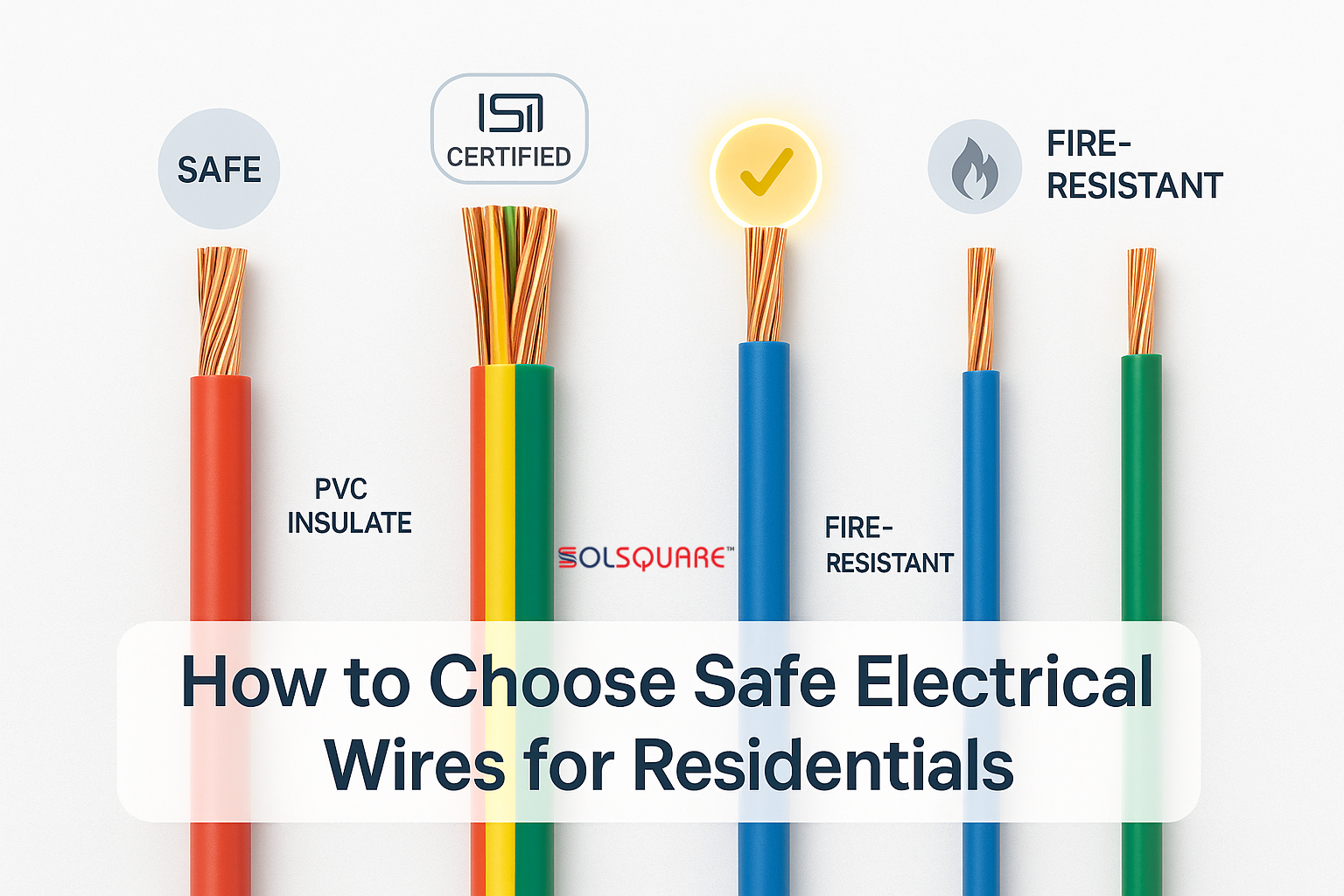How to Choose Safe Electrical Wires for Homes and Apartments
Learn how to choose or buy the safest electrical wires in houses and flats. you needed to know the types of wires, Plug and play, insulation, copper and aluminum, professional advice to prevent any fire break out and keep the installation efficient.

Electrical wires are the hidden lifelines of every home and flat. Electrical wiring accounts for lighting and charging, appliances and entertainment systems, and dependable and undisturbed household power delivery is contingent upon safe, efficient, and functional wiring, without the threat of electric shock, short circuiting, or fire.
The sheer volume of types and brands of wire can make finding whatever you need a challenge. So, how do you select the right wire for your situation?
This guide highlights the most important factors to consider when selecting safe electrical wire for home use.
1. Understand the Basic Types of Electrical Wires
Different applications require different types of electrical wires. Here are the most common ones used in residential buildings:
a. Single-Core Wires
- Ideal for internal wiring of homes
- Easy to route and install
- Comes in various gauges and colors
b. Multi-Core Flexible Cables
- It is applied where flexibility is required (e.g. appliances)
- Easier to bend around corners
c. Armoured Cables
- Suitable for underground or high-load wiring
- Offers extra protection with a steel layer
d. FR, FRLS and HRFR Wires
- FR (Flame retardant): Fire retardance
- FRLS (Flame Retardant Low Smoke): Offers little or no smoke and poisonous gases
- HRFR (Heat Resistant Flame Retardant): Calculated to be tolerant to a greater level of heat
2. Select the correct size (gauge) of the Wire
What size of the wire (gauge) should I select?
The thickness of wire-in square millimeters (mm²) is an important factor when it comes to safety and energy efficiency.
| Wire Size | Ideal For |
|---|---|
| 1.0 - 1.5 mm² | Lighting circuits |
| 2.5 mm² | Sockets, power outlets |
| 4.0 mm² and above | Air conditioners, geysers, heavy appliances |
Using undersized wires can lead to overheating, while oversized wires may be unnecessary and expensive.
3. Prefer Copper Over Aluminum Conductors
Although aluminum wires are cheaper, copper wires are generally safer and more efficient for home use.
Why choose copper wires?
- Higher conductivity
- Better heat resistance
- Longer life
- Less oxidisable
Industry Secret: The copper should be 99.9 percent pure and annealed so that it is flexible and strong.
4. ISI certification and Standards check
Whenever purchasing wires, it is always advisable to purchase those that have been made to ISI (Indian Standards Institute) or IEC requirements. What this certification guarantee is:
- Quality insulation
- Correct conductor size
- Heat resistance
- Fire safety
How to verify: Look for the ISI mark with the license number (CM/L No.) on the wire packaging.
5. Pay attention to the Insulation Quality of the Wire
The resistances of the wire to heat, moisture and chemicals will depend on the outer layers of the same (PVC, XLPE etc).
- PVC (Poly-Vinyl Chloride): Common & Easy to work with
- XLPE (Cross-linked Polyethylene): Superior heat resistance
- Low Smoke Zero Halogen (LSZH): Best for enclosed areas in case of fire
Avoid cheap wires whose insulation is thin or brittle, they can crack in the course of time.
6. Consider Color Coding for Safety
Standard color codes help electricians identify the purpose of each wire:
| Color | Purpose |
|---|---|
| Red | Live wire |
| Black | Neutral wire |
| Green | Earth/grounding |
| Yellow/Blue | Alternate phase |
Using color-coded wires prevents confusion and reduces the chances of incorrect connections.
7. Buy Wires According to Load Requirements
Calculate your electrical load before buying wires:
- Total wattage of all appliances
- Simultaneous usage rate
- Circuit length and voltage drop tolerance
Talk to a licensed electrician so you are sure that you are getting wires to support your power requirements without voltage drop or over heat.
FAQs
Conclusion
The price of the electrical wire is not the only thing that matters when you decide what electrical wire to put in your home or apartment. Whether it is the correct sizing or certified insulation, all aspects count.
You should too choose branded (and ISI certified) copper wires which are suitable to your exact requirement and run into trouble, call a licensed electrician.
Safe wiring is single time expenses that secures your family, home and devices when used over the period of years.